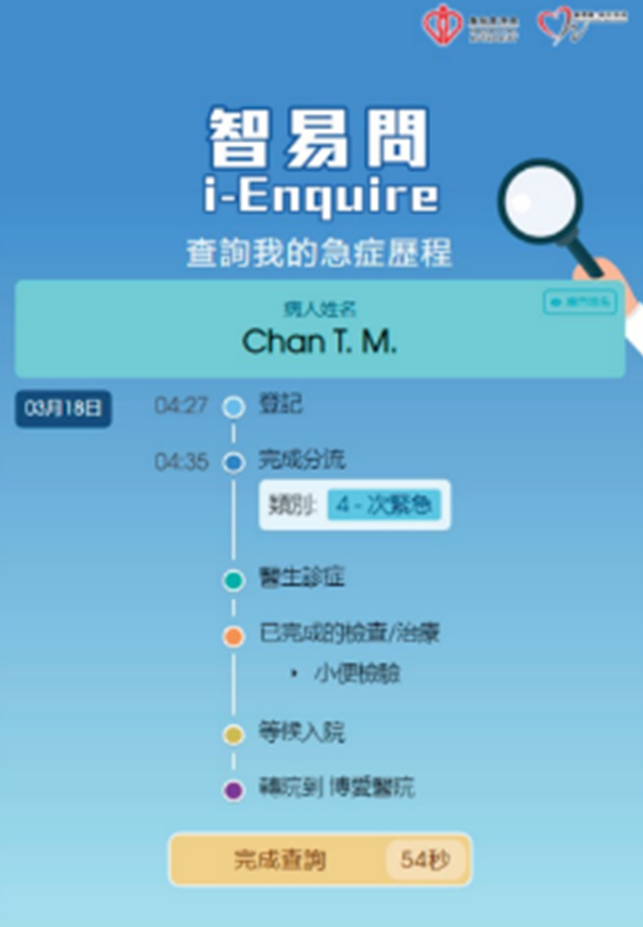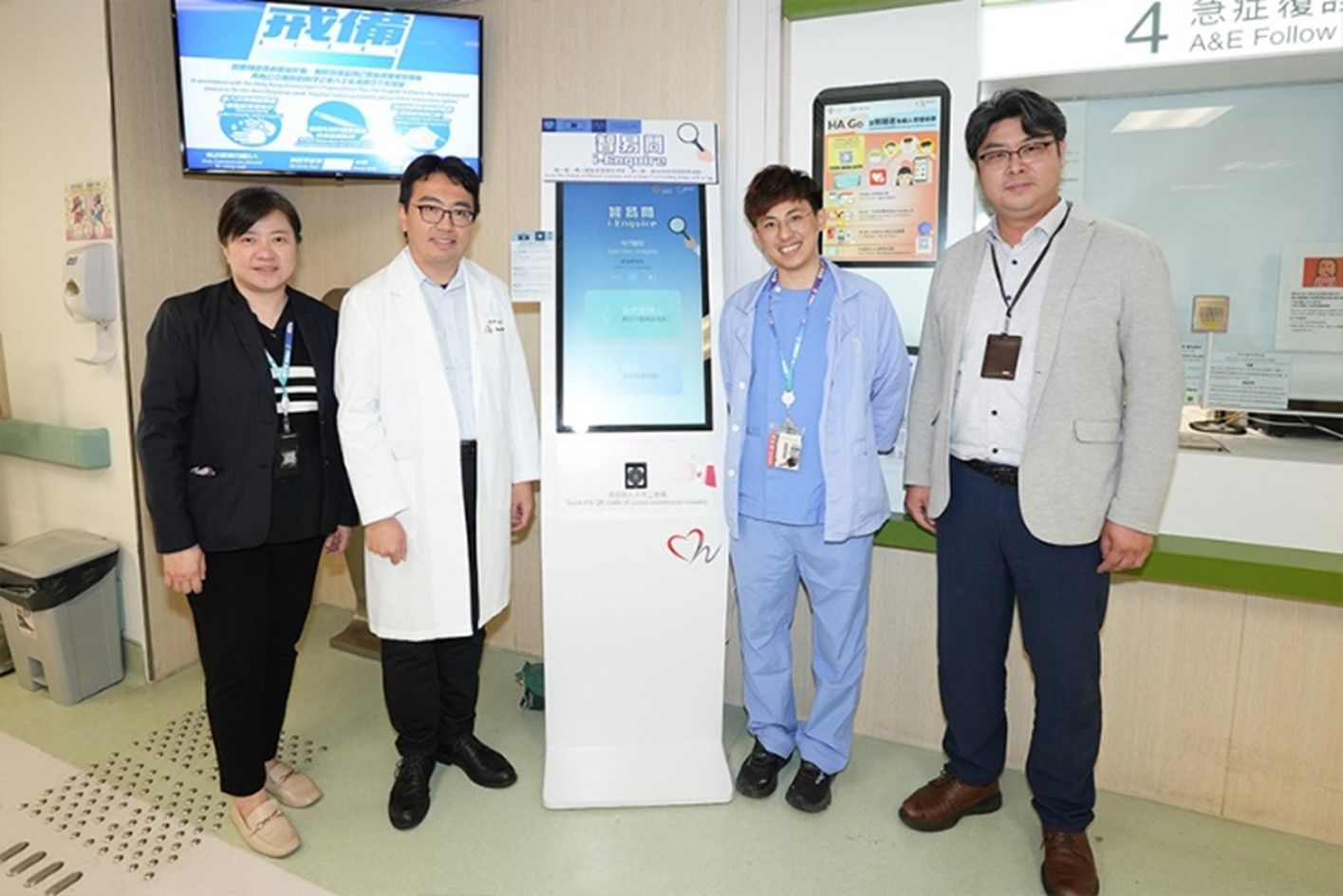How a smart A&E kiosk is helping ease staff workload and patient anxiety
)
The i-Enquiry smart kiosk, developed by Hospital Authority Hong Kong’s New Territories West Cluster (NTWC), provides A&E patients and their loved ones with real-time updates on patient journeys and locations.
The Accident & Emergency (A&E) department is one of the busiest environments in a hospital, handling a majority of urgent and high-risk cases that require immediate medical attention.
A&E patients and their loved ones, understandably anxious about their condition and waiting time for consultation or treatment, often direct enquiries to A&E nurses and counter staff, further increasing their workloads and affecting operational efficiency.
“Patients and their families often have many questions when they arrive at the A&E departments. For example, patients usually ask the A&E nurses, ‘When will I see the doctor? How long do I have to wait? What am I waiting for?’ Another situation is that the patients are unable to tell relatives their location clearly, especially when they are in critical condition, which makes their family members particularly anxious when they come to the hospital and search for the patient,” said Dr Lui Chun-tat, Cluster Coordinator (Information Technology/Information Systems) at Hospital Authority (HA) Hong Kong’s New Territories West Cluster (NTWC). NTWC is one of seven hospital clusters under HA, comprising five hospitals and eight out-patient clinics.
Introducing i-Enquire
 |
With the aim of delivering more timely information on patient journeys and locations, NTWC developed i-Enquire, a smart kiosk system installed in the A&E main hall and hospital lobby. The touchscreen kiosk allows A&E patients to scan the QR code on their identification bracelet and access real-time information – captured from the eAED database – on the upcoming steps in their patient journey. |
In addition, the patient’s loved ones can also use i-Enquire to locate a patient within the hospital. By entering the patient’s information into i-Enquire correctly, the system will show the patient’s current location – whether the patient is in the waiting hall, cubicle bed area, observation area of A&E department, or has been transferred to an inpatient ward. It will also provide navigation directions to the specified location.
The NTWC team noted that steps have been taken to safeguard patient privacy and information security. The patient’s family and friends must complete the verification process, starting with entering the patient’s ID card number or contact phone number, and then correctly matching the patient’s basic information on the screen, including name, age group and gender, etc. This verification process aligns with the existing process at enquiry counters.
“We attach great importance to the protection of patient privacy and information security, and have incorporated a number of elements into the design of the system to prevent others from obtaining patient information by random trials,” noted Dr Lui.
“A patient privacy impact assessment was conducted prior to the launch of i-Enquire, so as to ensure that the operation is fully compliant with Hospital Authority (HA)’s guidelines and policies on the protection of patient privacy.”
Another consideration was around delivery of sensitive information. For example, if a patient succumbed in A&E, i-Enquire would not disclose this to their loved ones during enquiry, but would direct them to the nurses and clinical team for tactful handling and communication.

Dr Lui (second from left) and his team with the i-Enquire kiosk
Early impact of i-Enquire on satisfaction and efficiency
The i-Enquire kiosk was piloted at Tuen Mun Hospital, part of the NTWC cluster, in January 2025.
Within the first four weeks, the kiosk logged 398 and 65 patient journey and location enquiries respectively. At the same time, the average daily number of enquiries handled by the enquiry counters dropped significantly, with a 38.5% decrease (from 5.7 to 3.5) in enquiries from A&E patients, and a 56.1% decrease (from 8.8 to 3.9) in enquiries about patient locations.
Users were largely satisfied with the performance of i-Enquire, with 92% of the users who enquired about patient locations giving a rating of 4 stars or above (out of a maximum of 5 stars).
Following the successful pilot, i-Enquiry has been rolled out to two other hospitals in NTWC, namely Pok Oi Hospital and Tin Shui Wai Hospital.
The project team noted that further publicity campaigns would be key to boosting adoption and usage of the service. There are plans to enhance i-Enquire and expand the types of information it can provide to further streamline the patient journey. More kiosks could be set up in the public areas and near the hospital entrance.
“The i-Enquire kiosk achieves the triple aims of increasing patient and public empowerment, relieving burden on clinical staff, and promoting a digital and smart hospital concept,” said NTWC. “Its development aligns with the direction of HA Smart Hospital 2.0 blueprint in establishing connected patient journeys and delivering patient-centric care. We will continue to monitor the project’s performance and optimise its features, as well as explore the feasibility of rolling it out to other hospitals.”
Credit to Hospital Authority Hong Kong for the information and photos.

